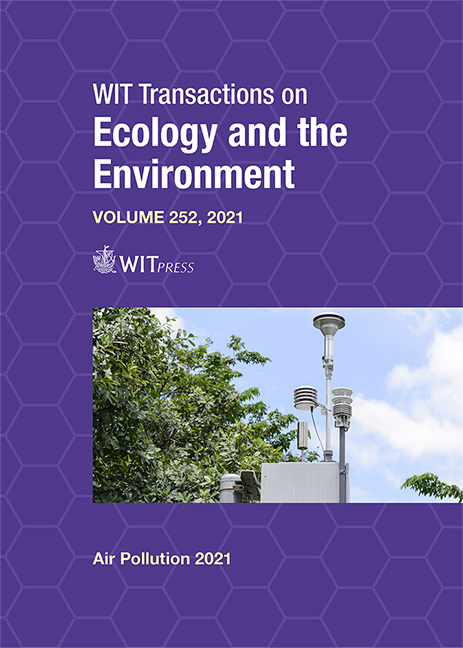SOURCE APPORTIONMENT AND TOXIC EVALUATION OF PARTICLE-BOUND POLYCYCLIC AROMATIC HYDROCARBONS (PAHS) IN PM1.1 OF BAOSHAN INDUSTRIAL AREA, SHANGHAI
Price
Free (open access)
Transaction
Volume
252
Pages
12
Page Range
199 - 210
Published
2021
Paper DOI
10.2495/AIR210181
Copyright
Author(s)
WEIQIAN WANG, QINGYUE WANG
Abstract
Ambient particles with five size-stages (PM1.1, PM1.1–2.0, PM2.0–3.3, PM3.3–7.0, coarse particles (>7.0µm) in aerodynamic diameter) were collected in the Baoshan industrial area of Shanghai (China) during spring and early autumn, 2017. Thirteen species of polycyclic aromatic hydrocarbon (PAH) compounds were measured by gas chromatography mass spectrometry (GC-MS) to measure size distribution characteristics, possible source apportionment and health risk assessment. Average total PAHs (TPAHs) in total suspended particles (TSP) were 4.65 (1.71–12.1) ng/m3 in spring and 3.85 (2.07– 5.75) ng/m3 in early autumn and they mainly massed in PM1.1 at each sampling period, especially in early autumn periods (about 57.0%–79.0%). Combustion-derived PAHs (COMPAHs), carcinogenic PAHs (CANPAHs) were also main associated in fine particles, such as PM1.1. Average lifetime lung cancer risk (LLCR) of PAH exposure by inhalation in PM2.0 were under 1 × 10–6 to indicate no carcinogenic risk but LLCR from PM1.1 in early autumn were higher than that in spring. Carcinogenic equivalent (BaP-TEQ), mutagenic equivalent (BaP-MEQ) and potency equivalent (BaP-PEQ) analysis showed that the toxic PAHs belonged to high molecular weight (HMW) PAHs, especially Benzo[a]pyrene(BaP). Diagnostic ratios of (BaA)/(BaA+Chy) under 0.50 and IndP/(IndP+BghiP) value (about 0.20–0.50) in PM1.1 indicated that diesel missions and petroleum combustion might be key PAHs sources. Principal component analysis (PCA) pronounced that stationary sources and diesel emission are the main sources, and higher and BaP showed the great effects from developed steel industry group at local industrial area. Air masses backward trajectories also showed the main local industry efforts and some long-distance transport effects. In short, compared with PM1.1–2.0, COMPAHs and CANPAHs could be considered that they were easier to gather in PM1.1, especially in early summer periods.
Keywords
particle-bound PAHs, PM1.1, health risk, possible sources, steel industry, Shanghai





